Bunions: what are they, causes, symptoms and treatments
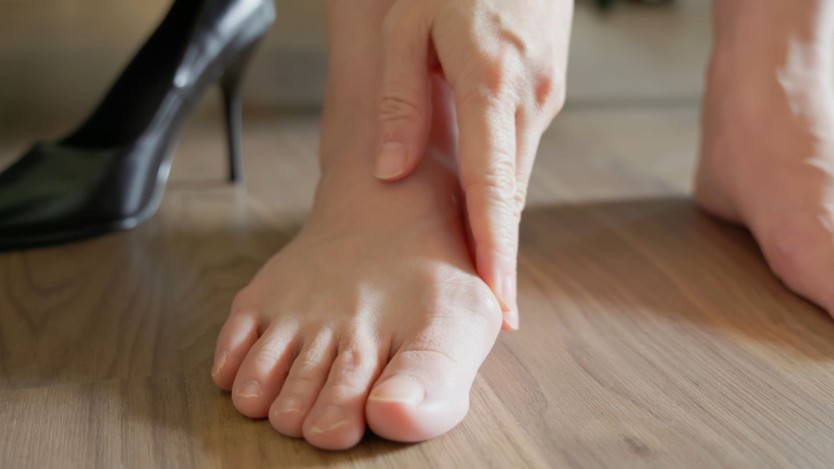
- What are bunions?
- What causes bunions to appear?
- What are the symptoms of bunions?
- How are bunions diagnosed?
- Is there any care to alleviate the pain caused by bunions?
- What treatments are available to eliminate bunions permanently?
- Postoperative period after bunion surgery
- Request surgical assessment consultation with Operarme
- Bunions or hallux valgus are a foot condition that affects a large part of the population, especially women.
- Among the causes of bunions are the inappropriate use of footwear or hereditary gait.
- As far as treatments for bunions are concerned, the definitive treatment for their complete elimination is surgery.
What are bunions?
Bunions are a deformity of the big toes, also known as Hallux Valgus. In order for us to understand in more detail what this problem consists of, throughout this page you will find everything related to this subject, from its symptoms and causes to its treatment and recovery.

Do you need hallux valgus surgery?
Request a free and immediate appointment with our specialists
Hallux Valgus is a deviation of the first metatarsal of the big toe (in fact, Hallux means "big toe" and Valgus means "outwards"), caused by a deformation of this bone due to different causes that we will explain below.
It is the deviation of the bone, i.e. hallux valgus, that causes the bunion to form. When the big toe rests on the second toe, the toe becomes more and more deviated, forming a bump that appears on the outer side of the foot and can become inflamed and red, causing a lot of pain to the sufferer.
Bunions can become painful as the bump on the outer side of the foot becomes inflamed.
The bunion, therefore, is a kind of bump that forms as the bony deviation occurs. If this deformity is not corrected in time, it may cause other deformities affecting the rest of the toes, which we will discuss later.
As for the symptoms of bunions, they usually appear when the problem is in its most advanced stages, however, there are people who, despite having bunions for many years, do not show any symptoms at all.

What causes bunions to appear?
Before learning about the causes of hallux valgus, we must differentiate between the three types of hallux valgus.
These are:
- Congenital hallux valgus: this is a very rare type of bunionette. These are cases of bunions that occur due to congenital abnormalities of the interphalangeal joint of the first toe. It is not the bunion itself that is inherited, but the way of walking that causes hallux valgus.
- Pathological hallux valgus: this is understood as the metatarsophalangeal deformity associated with pathologies such as rheumatoid arthritis or gout.
- Acquired hallux valgus: this is the most common type of bunion. These cases occur as a result of general, extrinsic and intrinsic factors. These factors are usually:
- Improper use of footwear, which presses the toes into the shoe and restricts the movement of the toes. Excessive use of high-heeled shoes also plays a role in the appearance of bunions for the same reason. This is not a direct consequence, but it does contribute to an earlier onset.
- Egyptian foot: the big toe is longer than the rest of the toes. The first long toe in a shoe is compressed and becomes deviated, which creates a vicious circle that leads to the onset and subsequent development of hallux valgus.
- Foot diseases, such as flat feet or pes cavus.
- Age: this could also be a triggering factor, as the older you get, the more likely you are to develop bunions due to more wear and tear on your feet, especially after the age of 40. However, it can also happen that a younger person has bunions, even if they do not cause any symptoms.
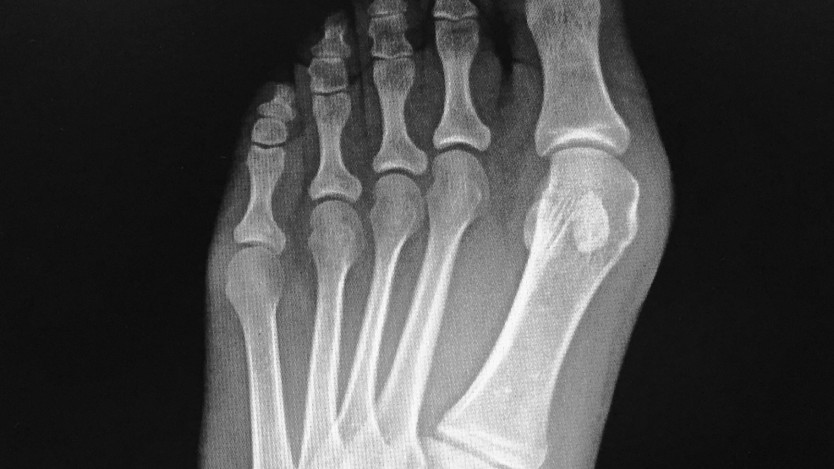
The development of bunions is mainly a female disease, mainly due to the use of tight, high-heeled shoes.
On the other hand, the fact that bunions appear more frequently in women than in men is no coincidence, as women often wear shoes with high heels and pointed toes, and are therefore more prone to bunions.
What are the symptoms of bunions?
Bunions are easily identified by the patient's symptoms, which may include the following:
The main and most obvious symptom of a bunion is the lump that develops at the outer base of the big toe. This bump may be red and swollen, which will cause pain to the patient. These symptoms are made worse by movement or even prolonged standing.
Bunions are characterised by rotation of the big toe towards the other toes, and can even be mounted on the second toe.
Other foot irritations such as corns, blisters, etc. are also common. In particular, the area affected by the bunion may be calloused and hardened.
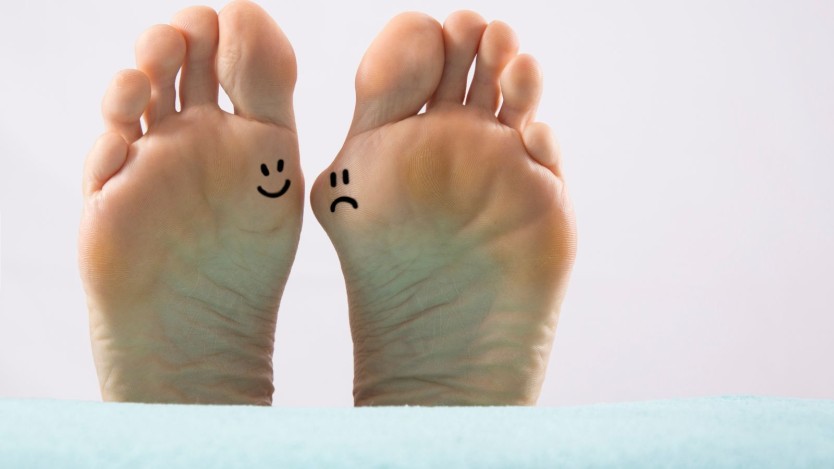
The pain may also be related to localised osteoarthritis in the joint due to the incorrect position of the bone.
The finger is also limited in its movements and sometimes has numbness and a burning sensation.
Finally, toe deformity can be another symptom of bunions. These deformities occur when the big toe deviates due to the bunion and puts pressure on the rest of the toes, which may curl, causing what is known as a bunion to curl:
- Clubbed toes: the flexed joint is the one closest to the tip of the toe.
- Hammertoes: the flexed joint is the one in the middle of the finger.
- Claw toes: the joint bent upwards is the one at the base of the toe and the middle joint is bent downwards.
These bunion problems can be more complicated to solve than simple hallux valgus, so it is recommended that hallux valgus be removed as soon as possible.
How are bunions diagnosed?
Diagnosis of a bunion is fairly straightforward, as we can easily see the bump on the toe with the naked eye. However, in order to make a reliable diagnosis of the severity of the problem, the specialist will use several techniques:
- Physical examination: the specialist will assess the severity of the deviation of the big toe and whether the deviation affects the other toes, as well as checking the mobility of the joint. The skin will also be palpated to check the degree of inflammation.
- Anamnesis of the patient: the specialist must know the personal condition of each patient to find out if there may be risk factors that have led to the appearance of Hallux Valgus. These factors could be age, profession, the existence of previous illnesses such as arthritis, etc.
If the bunions are not painful and do not prevent the use of footwear, specialists advise against operating on them.
- Radiological examination: this consists of taking X-rays of the foot, both lateral and anteroposterior. The lateral X-ray shows the alterations of the foot (flat, cavus) and the deformation of the toes (claw, hammer or mallet). The anteroposterior X-ray shows the characteristics of Hallux Valgus, such as the angle of the bone.
- Podoscopy: this is a test that allows dynamic analysis of the alterations of the foot.
- Analytical analysis.
Is there any care to alleviate the pain caused by bunions?
Yes, it is possible to alleviate the discomfort and pain of bunions by applying some of the following care, as long as the severity of the Hallux Valgus is mild or moderate, if it is a severe case, this care will alleviate the symptoms for very short intervals.
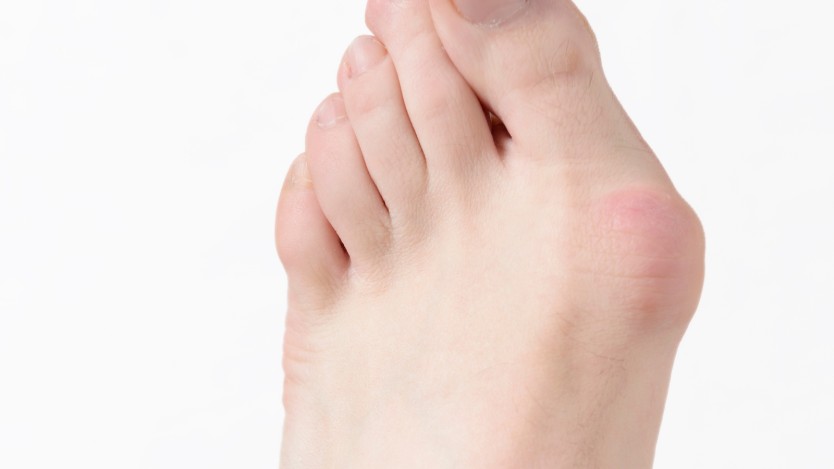
When the bunion has already started to develop, you may start to notice symptoms, however, it can also be the case that the bunion has no symptoms (especially at the beginning of its appearance).
Here are some tips that can help to alleviate bunion pain:
- Wear appropriate footwear, i.e. avoid wearing shoes that squeeze the toes and instead wear shoes with a wide toe box. It is also important to avoid wearing high heels.
- Use interdigital spacers that will separate the toes from each other and keep the toe in the right position and foam pads, which will prevent the bunion from rubbing against the shoe.
- Apply ice to the bunion 2 or 3 times a day to reduce swelling and pain.
- Taking anti-inflammatory medication also reduces inflammation and pain, although these must be prescribed by a specialist.
- Modify activity, i.e. avoid activities that may cause bunion pain, such as standing for long periods of time.
- There are also some exercises and/or massages that can alleviate symptoms, although only temporarily.
- Corrective posture: this is done by resting the foot on a flat surface and then holding the big toe and separating it from the rest of the toes outwards for as long as possible.
- Corrective massage: to improve the toe deformity and relax the muscle, you can apply pressure and slide both thumbs of the hand from the top of the foot towards the toes. Perform up to 9 deep pressures.
What treatments are available to eliminate bunions permanently?
There are many ways to relieve the pain of bunions, as we have already mentioned, however, the only way to completely eliminate the pain and make the bunion disappear is by resorting to surgery.
Whatever the cause of the bunion, Hallux Valgus, it should be noted that it does not disappear by itself, but worsens over time if it is not treated properly and on time. However, it is true that some can get worse more quickly than others.
When bunions interfere with daily activities, preventing you from performing them normally because of pain or discomfort caused by the bunion, it is time to consider intervention.
Bunion surgery is indicated in painful cases or when the problem prevents them from walking normally.
Two of the techniques that exist to remove the bunion are the following:
Operation for bunions or Hallux Valgus with osteotomy
It consists of realigning the bone (first metatarsal) of the big toe so that the joint retains its original shape, i.e. so that it remains straight, which is how it should be.
After local or regional anaesthesia, the operation begins:
- The surgeon accesses the area where the bunion is located through an incision.
- When the surgeon reaches the area, the surgeon cuts or cuts the part of the metatarsal that protrudes outwards (remember that this is the cause of the bunion).
- After sectioning the bone, the surgeon places a series of screws in the bones to make them join properly and allow the bone to grow.
- Finally, the surgical wound is sutured and the foot is bandaged.
It should be noted that bunion surgery with osteotomy is indicated above all when the foot has a deviation of more than 30°, i.e. when the operation is of a more serious nature.
Once the deviation has been eliminated, the bunion will disappear with it, as the tissues that were under tension are released.
This type of intervention is simple and does not require hospitalisation, as it is an outpatient procedure. It lasts between 30 and 90 minutes.

Do you need bunion surgery?
Request a free and immediate appointment with our specialists in Traumatology
Hallux Valgus surgery without osteotomy
Bunion surgery without osteotomy is also known as "percutaneous surgery" and is minimally invasive, as the surgeon does not make large incisions to reach the problem and does not cut the bone, as explained in the previous technique.
This procedure is recommended for mild to moderate cases of hallux valgus.
To perform the Hallux Valgus surgery without osteotomy, the following steps are performed:
- First, the patient is given a local or regional anaesthetic.
- After the anaesthesia has taken effect, the surgeon makes three or four incisions in the area to be operated on.
- Through the small incisions, the specialist inserts the necessary surgical tools inside the foot.
- Using the tools, the surgeon can see the inside of the foot on a monitor, which is located in the operating room. In this way, he can operate correctly, correcting the deviation.
- After the bone has been repositioned, the surgical wound is sutured and the foot is bandaged.
Once the hallux valgus has been operated on, as with the previous operation, the tissue is no longer under pressure and the bunion disappears.
As with the previous technique, bunion surgery with osteotomy, this operation also lasts between 30 and 90 minutes.
Postoperative period after bunion surgery
As is the case after any surgical intervention, specialists insist that patients follow all of the indications and care required to ensure the success of the treatment, as well as respecting the time necessary to achieve full recovery.
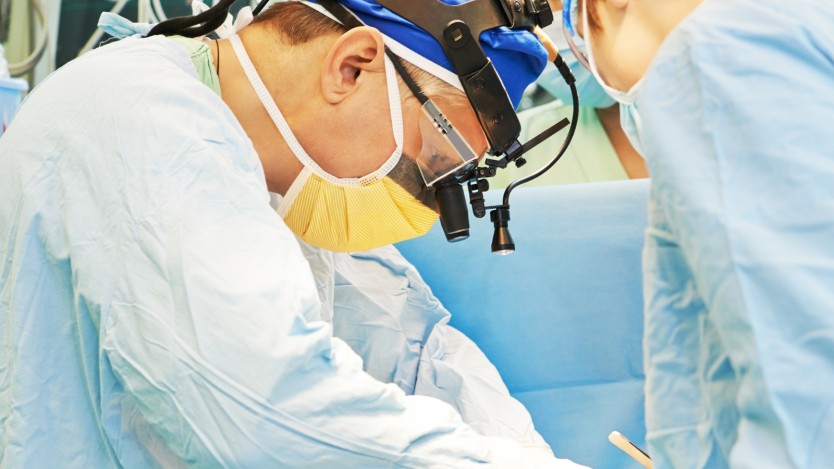
Recovery after bunion surgery with osteotomy
After bunion surgery with osteotomy, the postoperative period will last approximately 3 to 6 weeks. After this time, you will be able to put your foot completely on the ground. However, it will not be until the 10th week that the patient will be completely healed and will be able to return to normal daily activities.
Recovery after Hallux Valgus surgery without osteotomy
The time it can take you to recover and return to your daily activities after Hallux Valgus surgery without osteotomy is usually between 15 days and 1 month. However, this will depend on your characteristics and the type of activities you want to resume, as in some cases it can take up to 3 months to return to exercise or work.
Guidelines to bear in mind after bunion surgery
After the operation, whether with or without osteotomy, you will need to:
- Wear stiff-soled shoes and you will also be fitted with an element between the first two toes that will keep them totally rigid and prevent the deviation from recurring.
- Avoid resting the operated foot for the first 2-6 weeks after the operation, depending on the amount of tissue affected during surgery.
- Take the analgesic and anti-inflammatory medication prescribed by the doctor to control pain.
- Change the dressing regularly, as instructed by the doctors, to avoid possible infection of the surgical wound. Similarly, the surgeon may instruct you to take antibiotics for this purpose.
In conclusion, the main objective of each of these operations is exactly the same: the complete elimination of the bunion and the symptoms it causes by correcting the hallux valgus, i.e. by aligning the big toe.
Request surgical assessment consultation with Operarme
If you are suffering from the discomfort and pain caused by the development of hallux valgus toe deviation, and you want to resolve these bunion symptoms as soon as possible, you can click on the image below to request a free surgical assessment consultation with our Traumatology Specialists.
You can also call on +34 91 141 33 56 or fill in the contact form so that our patient service department can contact you and arrange an appointment at the best private hospitals in Spain with which we collaborate.

Do you need bunion surgery?
Request a free and immediate appointment with our specialists in Traumatology
Medical disclaimer: All the published content in Operarme is intended to disseminate reliable medical information to the general public, and is reviewed by healthcare professionals. In any case should this information be used to perform a diagnosis, indicate a treatment, or replace the medical assessment of a professional in a face to face consultation. Find more information in the links below:
